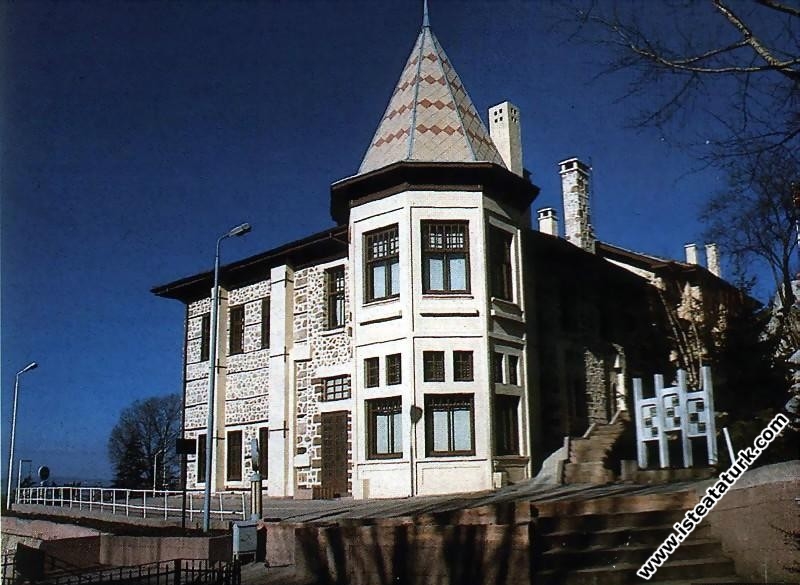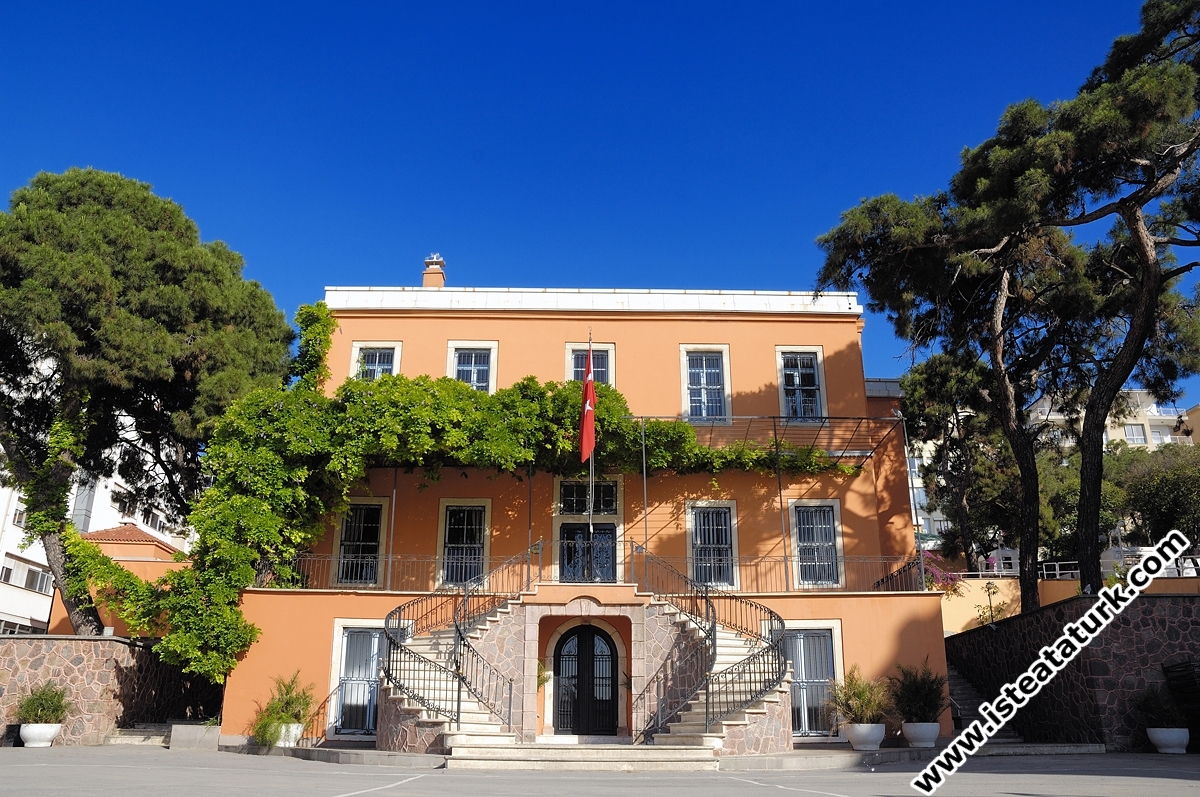Alagöz Commander-in-Chief Headquarters Museum
Character Size
Alagöz Commander-in-Chief Headquarters Museum
Alagöz Commander-in-Chief Headquarters Museum
Located in the Alagöz Village of the Polatlı District and belonging to Türkoğlu Ali Ağa, the two-storey house was chosen as the Headquarters in the Battle of Sakarya.
Atatürk, in his Great Speech ( I went to the Erkan-ı Harbiye-i Umumiye Front Headquarters on 12 August 1921.. ) said, from this building, the Sakarya Battle, which continued for 22 days, 22 nights, from August 23, 1921 to September 13, 1921. In his own words, he prepared all the plans for a "great battle, which is rare in the history of the world", in this building and made his historical decisions here.
The Battle of Sakarya (23 August 1921-13 September 1921), which was the turning point of the Turkish War of Independence and lasted for 22 days and 22 nights, was planned and conducted in this house in the light of a kerosene lamp with a hat.
The Turkish War of Independence was realized after a series of wars with the enemy. These battles; After success in Eastern Anatolia, Southern Anatolia. It was directed against the strongest enemy in Western Anatolia. At the most critical moment of this war, Atatürk gave the order to our armies , "There is no defense on the line, there is defense on the surface. That surface is the whole country. Every inch of the land of the homeland cannot be abandoned until it is wet with the blood of the citizens."
In Sakarya, under the command of Atatürk, the Turkish Army defeated the Greeks and showed the great vitality of the Turkish Nation to the whole world. In the Battle of Sakarya, the Western Front Command chose the Alagöz Village between Ankara and Polatlı as the front headquarters after the enemy advanced to the vicinity of Polatlı. Alagöz Village, which has 45 houses and 285 inhabitants today, was a small farm consisting of a few buildings at that time. The farmhouse belonging to Türkoğlu Ali Ağa, one of the people of this village, was used as headquarters. From August 23 to September 13, 1921, the war that continued for 22 days and 22 nights, Atatürk managed from this building, prepared all his plans here, and made his historical decisions here. At the end of the Sakarya War, the building was used as a house by its owners, Ali Türkoğlu and his sons, until 1965. In 1965, it was transferred to the Ministry of National Education by his heirs. In 1967, it was transferred to the Anıtkabir Museum Directorate, which is affiliated to the General Directorate of Antiquities and Museums, and the building was repaired and turned into a museum.
The building, which was turned into a museum, was opened to visitors on November 10, 1968 by the President of the time, Cevdet Sunay. The building was transferred to the Anıtkabir Command affiliated to the General Secretariat of the General Staff on March 1, 1982. The building has 12 rooms and 2 floors. Stone and mudbrick were used as building materials and it was covered with a tile roof from the outside. There are wooden carved decorations on the ceilings of the sofa and some rooms on the upper floor. There is a wooden peacock depiction on the triangular pediment on the pillars on the entrance facade of the building. The lower and upper floor plans of the building are square and there are rooms opening to the middle hall. Sofa and rooms are rectangular in plan. In 1968, only the upper floor of the building was opened for exhibition, while the lower floor rooms were left empty.
The first room from the right on the lower floor is the "Clothing Room", where the uniforms worn during the War of Independence are located. The second room from the right is arranged as the "Library and Souvenirs Room". There are books written about Atatürk with Atatürk's Address to the Youth. Guns, rifles, cashews, swords and hand grenades obtained from the Istanbul Military Museum and the Polatlı Artillery School are exhibited in the "Weapon Showcase" opposite the entrance door. Two Steyr and Spanday machine guns are located on both sides of the showcase. The room at the bottom left is prepared as the "Officer Dining Room". The room on the left, which was used as a kitchen at the time, was again arranged as the "Kitchen". The room to the left of the entrance is the "Communication Room". In this room, there are various means of communication.
Upstairs, the first room from the right is the "Commander's Room". This room, where Atatürk prepared his war plans for 22 days and 22 nights under the light of a capped kerosene lamp, with his friends, was arranged in a way to revive his cherished memory. The second room on the right is designated as the "Staff Delegation Room". The "Recreation Room" adjacent to this room is the room where Atatürk drank his coffee to rest when he was tired of his work. The room at the bottom on the left is arranged as the "Advices Room". The room in the middle on the left is "Atatürk's Bedroom". In this room are some of the items Atatürk used. Bed cover, pillows, pajamas, prayer rug and carpet are among Atatürk's belongings. Next to this room is "Atatürk's Dining Room". The small space above the porch was reserved for Atatürk's servants and was arranged with that thought. There are sketches showing the Battle of Sakarya on the walls of the sofa (hall) on the upper floor.
Let's listen to a memory from Halide Edip Adıvar that took place in the Alagöz Headquarters of the Sakarya Pitched War:
In Alagöz village, next to the front
... An officer took me to Mustafa Kemal Pasha's headquarters. On the left, under the mounds of earth, a few houses were lit. It was only coming from the darkness. It was the communication of a soldier who provided the telephone service in O with a village called "groans, tar, groans, tar". The right side is a pit, water is running through it. There are three more houses behind it. Behind these houses are tents with their lights still on; a long and pointed pole; radio equipment. Village roads are dark and muddy. The moon has set, it's midnight. We crossed a small wooden bridge and went to the house on the other side. Mustafa Kemal Pasha's guards are at the door; one of them took me upstairs. Pasha's aide, Muzaffer Bey, took me to Pasha's room. An Anatolian room that is very bright and has the only luxury lamp.
Mustafa Kemal Pasha tried to get up from his seat with difficulty. Because his ribs were still in pain. I went to Pasha with absolute reverence in my heart. In that humble room, he represented the decision of all the youth, "To risk dying so that a nation may live. Neither palace, nor fame, nor any power can come close to his greatness in that room." I went and kissed your hand.
He showed me a chair after saying "You're in the right, ma'am". And he asked about news about Ankara. At the same time, he bent over a map on the wooden table and explained the situation in such a clear and simple way that even a four-year-old could understand it. Here, Sakarya is curling up. Pins have been placed around the river with flickering red and blue paper butterflies on them. If I told Mustafa Kemal Pasha about my feelings about the military situation, he would definitely laugh. The Greek army seemed to approach Ankara like a huge monster. Contrary to this, the Turkish Army was trying to prevent this monster from engulfing Ankara by curling up in the east of Sakarya. The black beast was so huge that it was frightening.
"What will we do if he goes to Ankara and leaves us behind?" I asked. He laughed like a fearsome tiger.
-"Have a good trip, sirs" I say; I will destroy them in the emptiness of Anatolia by hitting them from behind. one
1 Halide Edip Adıvar, The Turk's Test by Fire
Alagöz Village Ankara-Eskişehir Road 41.km. Polatlı
Tel: (312) 231 79 75/2330 - 231 18 61
Headman of Alagöz: (312) 641 65 13
Fax: (312) 231 53 80
Open every day of the week Summer: 09.00-17.00 Winter: 09.00-16.00
Source: 1- A A M, Atatürk Evleri Atatürk Müzeleri, Mehmet Önder, Türk Tarih Kurumu Basımevi 1993. ISBN: 975-16-0077-4. Sayfa: 83-84
2- www.sakaryasavasi.com

